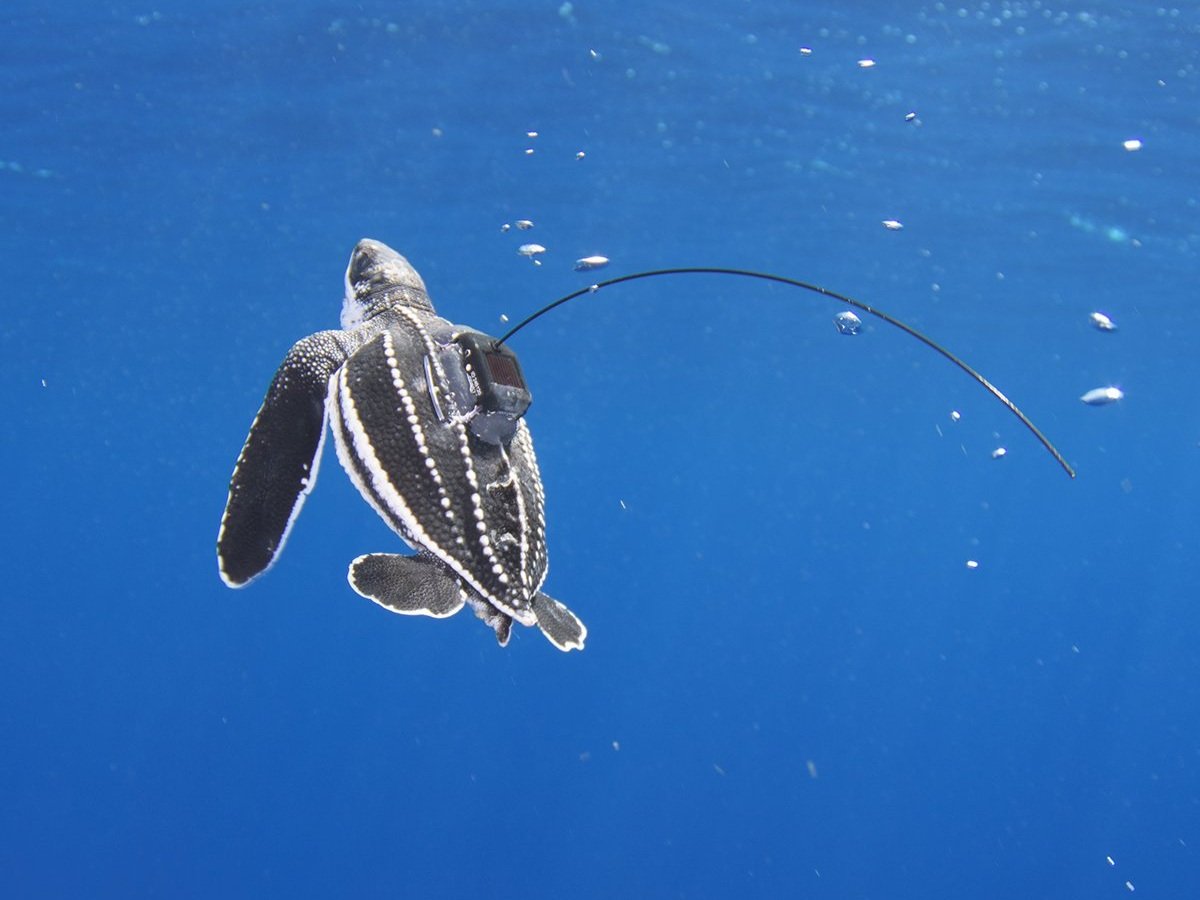New technologies are finally shedding light on one of the greatest mysteries in sea turtle biology. Using prototype “micro-satellite” tags specifically designed to fit juvenile leatherback turtles, Upwell and Florida Atlantic University researchers released eighteen captive reared juvenile leatherbacks to track their movements off the coast of Florida and shed light on the “lost years” phase of their lives.
Studying Turtles at Sea Offers Deeper Insights
Data collected at nesting beaches give us only a brief glimpse into sea turtles’ intricate life histories. Satellite tags are one of the best tools available to collect data on sea turtle movements and behaviors in marine habitats. But where tags are deployed matters. Deploying tags at nesting beaches means we are limiting our research scope to the females within a population that are nesting in a given year.
Saving Sea Turtles with Technology
You might not think of someone behind a desk as working on the frontlines of sea turtle conservation, but Upwell’s Oceanographic Researcher, Tony Candela is doing just that. Tony is incorporating mathematics and oceanography to simulate the movements of hatchling and juvenile sea turtles to advance protections for them at sea.








